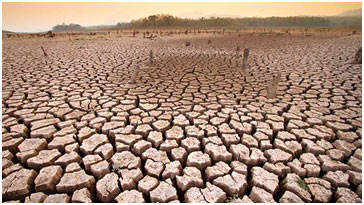What is Biodiversity?”
Biological diversity indicates the variety amongst living organisms from all sources including, inter alia, terrestrial, marine, and other marine environments and the eco-friendly complexes of which they are a part; this consists of diversity within species, in between species and of ecosystems”.
Biodiversity is fundamental as it guarantees the natural sustainability of all life in the world not only for the current population however likewise for future generations. Nevertheless, biodiversity continues to be threatened and in consequence, it impacts the survival of humans.
Various concerns have been raised by ecological supporters and companies such as the UNEP, WWF, Green Facts Foundation, and EPA with regards to the hazards presented on many of the world’s ecosystems which are increasingly degrading in the state by ending up being unhealthy and out of balance.
Human activities are causing a loss of biological diversity among animals and plants globally approximated at 50 to 100 times the average rate of species loss in the absence of human activities. The rate of decrease would represent 1000 to 10,000 times the expected rate of extinction without logging by people. Some studies recommend that, internationally, as lots as one-half of all mammal and bird species may become extinct within 200 to 300 years. Here are explained a few of the significant risks to biodiversity.
- 1) 1.Habitat loss and deforestation
- 2) 2.Global Climate Change
- 3) 3.Desertification
- 4) 4.Contamination
- 5) 5.Invasive or Alien species
- 6) 6.Increasing Wildlife Trade
- 7) 7.Overexploitation
- 8) MCQs
- 9) Frequently Asked Questions (FAQs) – Major Threats to Biodiversity
- 10) Tutorial Summary: Major Threats to Biodiversity
- 11) You may also like to learn:
1.Habitat loss and deforestation
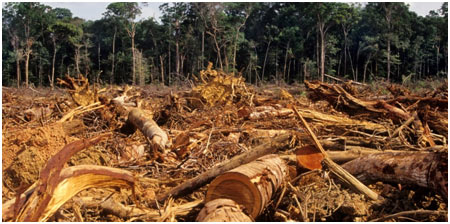
The significant change of environments directly threatens biodiversity. When such environments are lost due to habitat loss and deforestation and other anthropogenic activities such as mining, the respective environments are unable to offer shelter, food, water, or breeding grounds for the living organisms.
In other words, it causes unhealthy and out of balance communities that result in the loss of biodiversity and termination. Deforestation, in particular, is associated with the destruction of about 18 million acres of forest habitats annually, damaging the environments on which numerous species depend on for survival.
2.Global Climate Change
CO2 released from the burning of nonrenewable fuel sources and biomass, deforestation, and agricultural practices contribute to greenhouse gases, which prevent heat from getting away from the earth’s surface. With the boost in temperature level expected from increasing greenhouse gases, there will be greater levels of air pollution, higher irregularity in weather patterns, and changes in the distribution of vegetation in the landscape.
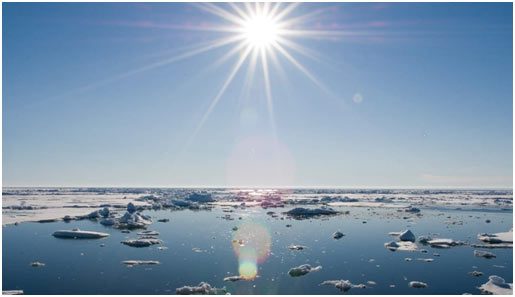
Some species will not have the ability to adapt to these modifications in the environment and will end up being extinct. However, it is expected that numerous plant and animal species will try to distribute to higher latitudes and elevations as the temperature level boosts. For that reason, any barriers in the landscape, such as highways and metropolitan areas that prevent movement to more hospitable environments, will result in loss of biodiversity.
3.Desertification
Desertification and deforestation are the primary causes of biodiversity loss. Both procedures are decisively affected by the extension of farming. The direct cost of deforestation is shown in the loss of valuable plants and animal species. Desertification procedure is the outcome of poor land management which can be exacerbated by climatic variations. Converting wildlands to agriculture typically includes ploughing the soils which lead in temperate areas to an average decrease in soil organic matter between 25 and 40 percent over 25 years.
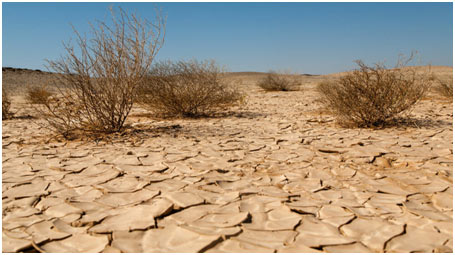
Reducing soil organic material is always a clear indication of soil deterioration, and frequently is accompanied by decreases in water seepage, fertility, and ability to keep fertilizers. Ploughing also exposes soils to wind and water erosion, resulting in large-scale pollution of freshwater resources.
4.Contamination
From the burning of fossil fuels (releasing unsafe chemicals into the atmosphere and, sometimes, diminishing ozone levels) to discarding 19 billion pounds of plastic into the ocean every year, pollution completely interferes with the Earth’s environments. While it may not necessarily cause extinction, contaminants do have the potential to influents species habits.
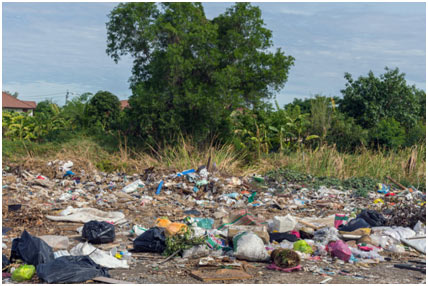
For example, acid rain, which is generally caused by the burning of fossil fuels, can acidify smaller bodies of water and soil, adversely affecting the species that live there by changing breeding and feeding practices.
5.Invasive or Alien species
The deliberate and inadvertent introductions of a wide range of species to communities in which they do not belong have actually resulted in communities that differ radically in structure and function from those originally present. Exotic types are usually introduced into communities without their co-evolved predators and parasites, which enables an alien invader to out-compete native species with comparable ecological requirements.
In British Columbia, plants such as Knapweed introduced to arid meadows, and Purple Loosestrife, introduced to the marsh and riparian areas, are rapidly becoming dominant plant species in their particular communities. The interactions between native species are altered or ruined by these exotic species and can lead to the loss of native biodiversity.
6.Increasing Wildlife Trade
The illegal trade is accusing severe hazard to biodiversity. Global trade includes a minimum of 40,000 primates, ivory from at least 90,000 African elephants, 1 million orchids, 4 million live birds, 10 million reptile skins, 15 million furs, and over 350 million tropical fish.
7.Overexploitation
Overhunting, overfishing, and over-harvesting contribute significantly to the loss of biodiversity, killing off various species over the past number of a century. Poaching and other kinds of hunting for profit increase the risk of extinction; the extinction of an apex predator– or, a predator at the top of a food chain– can lead to catastrophic effects for communities.
MCQs
- What does biodiversity encompass?
- a) Variety in technological advancements
- b) Diversity among humans
- c) Variety in living organisms and ecosystems
- d) Diversity in climate patterns
- Answer: c
- Why is biodiversity considered fundamental?
- a) For economic sustainability only
- b) For current human population only
- c) For the natural sustainability of all life on Earth
- d) For entertainment purposes
- Answer: c
- What is the estimated rate of global species loss due to human activities?
- a) Equal to the expected rate of extinction without human activities
- b) 10 to 50 times the average rate of species loss
- c) 100 to 1,000 times the expected rate of extinction without human activities
- d) Not affected by human activities
- Answer: c
- What is the primary consequence of habitat loss and deforestation on biodiversity?
- a) Enhanced biodiversity
- b) Balanced ecosystems
- c) Unhealthy and imbalanced communities leading to biodiversity loss
- d) Increased breeding grounds
- Answer: c
- How much forest habitat is estimated to be destroyed annually due to deforestation?
- a) 5 million acres
- b) 10 million acres
- c) 18 million acres
- d) 25 million acres
- Answer: c
- What contributes to greenhouse gases and global climate change?
- a) Planting more trees
- b) Increased urbanization
- c) Release of CO2 from burning fossil fuels, deforestation, and agricultural practices
- d) Reducing industrial activities
- Answer: c
- What is the potential consequence of barriers like highways and urban areas in the landscape during climate change?
- a) No impact on biodiversity
- b) Enhanced migration of species
- c) Loss of biodiversity
- d) Decreased air pollution
- Answer: c
- What is the main cause of desertification and biodiversity loss?
- a) Forest fires
- b) Industrial activities
- c) Extension of farming
- d) Natural climate variations
- Answer: c
- What is a clear indication of soil deterioration resulting from desertification?
- a) Increased fertility
- b) Decreased water seepage
- c) Elevated organic matter
- d) Higher ability to retain fertilizers
- Answer: b
- How does pollution affect Earth’s environments?
- a) Enhances biodiversity
- b) Positively influences species behavior
- c) Interferes with environments by releasing harmful chemicals
- d) Promotes healthier ecosystems
- Answer: c
- What is an example of the impact of pollution on species behavior?
- a) Increased breeding practices
- b) Unaltered feeding patterns
- c) Acid rain affecting breeding and feeding practices
- d) Elevated species adaptability
- Answer: c
- How do invasive or alien species impact native biodiversity?
- a) They promote native biodiversity
- b) They have no impact on native species
- c) They out-compete native species and alter interactions, leading to biodiversity loss
- d) They enhance co-evolution with native predators
- Answer: c
- What is the primary consequence of the illegal wildlife trade on biodiversity?
- a) Decreased risk to biodiversity
- b) Enhanced population of endangered species
- c) Severe hazard to biodiversity
- d) Promotes conservation efforts
- Answer: c
- How do overhunting, overfishing, and over-harvesting contribute to biodiversity loss?
- a) They have no impact on biodiversity
- b) They lead to enhanced biodiversity
- c) They contribute significantly to the loss of biodiversity by killing off various species
- d) They result in controlled population growth
- Answer: c
- What is the impact of overexploitation on apex predators in a food chain?
- a) Decreased risk of extinction
- b) No impact on biodiversity
- c) Catastrophic effects for communities
- d) Enhanced biodiversity
- Answer: c
- What organization has raised concerns about biodiversity threats?
- a) WHO
- b) UNEP
- c) NASA
- d) UNESCO
- Answer: b
- Which human activities contribute to the loss of biological diversity globally?
- a) Enhancing conservation efforts
- b) Protecting natural habitats
- c) Causing a loss estimated at 50 to 100 times the average rate of species loss
- d) Promoting sustainable agriculture
- Answer: c
- What does biodiversity encompass within species?
- a) Only variety within humans
- b) Only variety within animals
- c) Only variety within ecosystems
- d) Variety within species, between species, and of ecosystems
- Answer: d
- What is the primary consequence of unhealthy and imbalanced communities on biodiversity?
- a) Enhanced biodiversity
- b) Increased breeding grounds
- c) Loss of biodiversity and termination
- d) Balanced ecosystems
- Answer: c
- How does the introduction of exotic species affect native biodiversity?
- a) Enhances co-evolution
- b) Has no impact on native species
- c) Alters interactions, leading to the loss of native biodiversity
- d) Promotes the well-being of native species
- Answer: c
- What is the primary consequence of barriers like highways and urban areas during climate change?
- a) Enhanced migration of species
- b) No impact on biodiversity
- c) Loss of biodiversity
- d) Decreased air pollution
- Answer: c
Frequently Asked Questions (FAQs) – Major Threats to Biodiversity
1. What is biodiversity, and why is it important?
- Biodiversity refers to the variety of living organisms in different environments, encompassing diversity within species, between species, and of ecosystems. It is crucial for the natural sustainability of life on Earth for both current and future generations.
2. Who has expressed concerns about the threats to biodiversity?
- Various environmental organizations, including UNEP, WWF, Green Facts Foundation, and EPA, have raised concerns about the hazards faced by ecosystems globally.
3. How are human activities contributing to the loss of biological diversity?
- Human activities are estimated to cause a loss of biodiversity globally, ranging from 50 to 100 times the average rate of species loss in the absence of human activities. This includes deforestation, habitat loss, pollution, and other anthropogenic factors.
4. What is the major consequence of habitat loss and deforestation?
- Habitat loss and deforestation directly threaten biodiversity by creating unhealthy and imbalanced communities. This results in the loss of biodiversity and, in some cases, extinction of species dependent on those environments.
5. How does global climate change impact biodiversity?
- Global climate change, driven by factors like CO2 emissions, deforestation, and agricultural practices, leads to increased temperatures, air pollution, and altered vegetation distribution. Species unable to adapt may become extinct, and barriers like highways can hinder their movement.
6. What is desertification, and how does it contribute to biodiversity loss?
- Desertification, often caused by poor land management and agricultural expansion, results in the loss of valuable plant and animal species. It involves processes like soil degradation, decreased fertility, and large-scale pollution of freshwater resources.
7. What are the consequences of contamination on Earth’s ecosystems?
- Contamination, from sources like burning fossil fuels and plastic pollution, disrupts Earth’s environments. While not necessarily causing extinction, contaminants can influence species behavior, such as the acidification of water bodies due to fossil fuel burning.
8. How do invasive or alien species impact native biodiversity?
- The introduction of exotic species to communities where they don’t belong can lead to radical changes in structure and function. The absence of co-evolved predators and parasites allows alien invaders to out-compete native species, resulting in the loss of native biodiversity.
9. What are the consequences of the illegal wildlife trade on biodiversity?
- The illegal wildlife trade poses a severe threat to biodiversity, involving the trafficking of primates, ivory, orchids, live birds, reptile skins, furs, and tropical fish. This trade contributes to the decline of various species and ecosystems.
10. How does overexploitation, such as overhunting and overfishing, affect biodiversity?
- Overexploitation contributes significantly to the loss of biodiversity, leading to the decline and extinction of various species. The extinction of apex predators can have catastrophic effects on entire ecosystems.
Tutorial Summary: Major Threats to Biodiversity
Introduction:
Biodiversity, representing the variety of living organisms and ecosystems, is fundamental for the natural sustainability of life on Earth. Despite its importance, biodiversity is under significant threat due to various human-induced activities.
Threats to Biodiversity:
- Habitat Loss and Deforestation:
- Deforestation and habitat loss directly threaten biodiversity, causing unhealthy and imbalanced ecosystems. This is particularly significant, with about 18 million acres of forest habitats being destroyed annually.
- Global Climate Change:
- CO2 emissions, deforestation, and agricultural practices contribute to global climate change, leading to increased pollution, irregular weather patterns, and shifts in vegetation distribution. Species may face extinction, and barriers hinder their adaptation to changing environments.
- Desertification:
- Desertification, coupled with deforestation, results in biodiversity loss. Poor land management, often exacerbated by climatic variations, leads to soil degradation, reduced fertility, and pollution of freshwater resources.
- Contamination:
- Pollution, from burning fossil fuels to plastic disposal, disrupts Earth’s environments. While not directly causing extinction, contaminants influence species behavior, such as acid rain affecting water bodies and soil.
- Invasive or Alien Species:
- Introducing species to ecosystems where they don’t belong disrupts native biodiversity. Exotic species, lacking co-evolved predators, can out-compete native species, leading to significant alterations in community structure.
- Increasing Wildlife Trade:
- Illegal wildlife trade poses a severe threat to biodiversity, involving the trafficking of primates, ivory, orchids, live birds, reptile skins, furs, and tropical fish. This trade contributes to the decline of various species and ecosystems.
- Overexploitation:
- Overhunting, overfishing, and over-harvesting contribute significantly to the loss of biodiversity. The extinction of apex predators can have catastrophic effects on entire ecosystems, disrupting the balance of food chains.
Conclusion:
The tutorial underscores the critical importance of understanding and addressing the major threats to biodiversity. Human activities play a central role in these threats, and awareness and conservation efforts are essential for the sustainable coexistence of diverse life forms on our planet.

